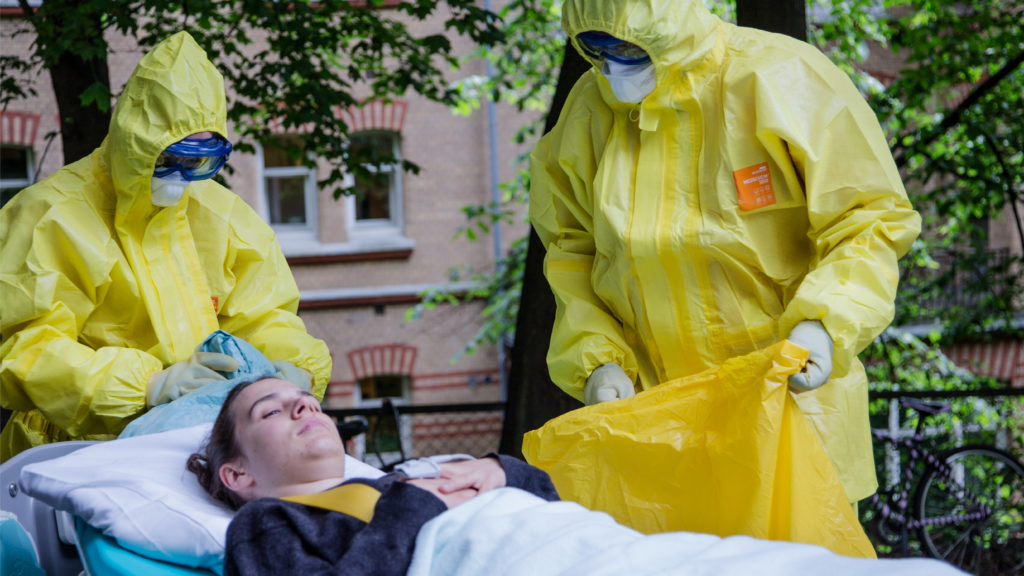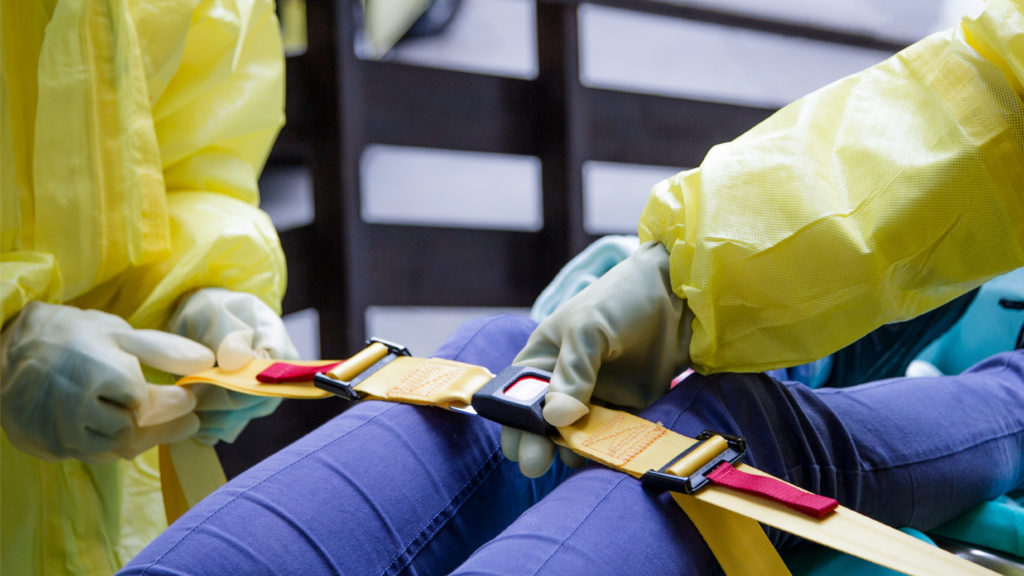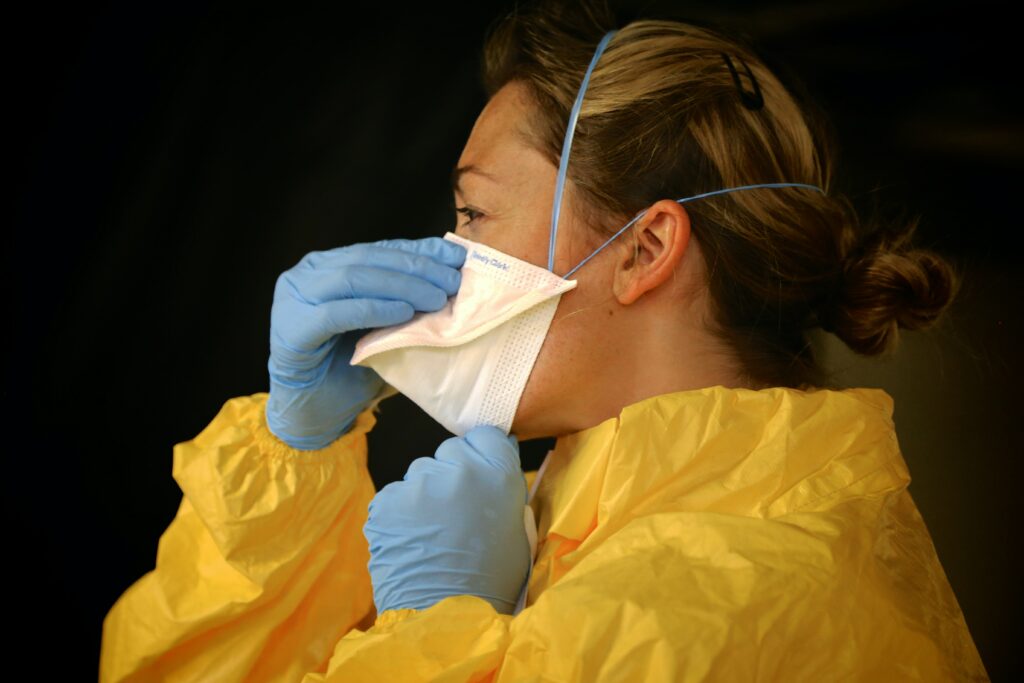PPE – a double-edged sword
Personal protective equipment (PPE) has gained a lot of media attention in the pandemic, as many institutions have run out of necessary equipment and healthcare professionals have been needlessly exposed to infection. PPE protects both healthcare professionals and patients during care and transport – from infectious patients, contaminated material, and toxic medication.
Without the right equipment, many have been exposed to and infected by Covid-19, and more than 115,000 healthcare workers have died. Studies show that healthcare workers were more than 3 times as likely to contract Covid as the general public. So, is the use of PPE always beneficial and risk-free?

Personal protective equipment (PPE) for infections
PPE has played an important part in the prevention of transmission of infection and will continue to be essential in the care of patients. When used properly, the equipment acts as a barrier between health care worker and the infectious material – minimising the exposure and blocking the transmission of contaminants from blood, body fluids, or respiratory secretions.
Additionally, PPE can protect the patient from contracting infections through surgical procedures, as well as protect those with immunodeficiency from being exposed to potentially infectious material brought in by visitors and healthcare professionals.
In other words, with the help of PPE, we can safely treat and provide care for the patient, no matter their disease, also ensure the safety of the healthcare professionals.
What does PPE include
PPE includes gloves, masks, eye protection, and clothing, where each of these items serves different purposes. Gloves prevent and reduce the spread of pathogens. A surgical mask helps stop pathogens in your nose and mouth from spreading and can also keep you from breathing in the pathogens. A special respiratory mask forms a tight seal around your nose and mouth and may be needed so that you do not breathe in small pathogens like tuberculosis bacteria or measles or chickenpox viruses.
The eye protection includes face shields and goggles and protects the mucous membranes from blood and other bodily fluids. The clothing, such as gowns, aprons, head covering, and shoe covers, acts as a barrier and is always necessary when treating an infectious patient so there is no transmission.
When used properly and with other infection control practices such as hand-washing, using alcohol-based hand sanitisers, and covering coughs and sneezes, it minimises the spread of infection from one person to another.

PPE disadvantages
However, the usage of PPE also comes with its disadvantages and challenges. As SARS-CoV-2 spread from country to country, the demand and usage of PPE increased at a high rate, resulting in shortage and incorrect use.
PPE can give the user a false sense of security, and if used incorrectly it does not provide the intended protection. The proper training in donning and doffing PPE is essential for it to be effective and prevent exposure, and as the current situation called for both healthcare professionals and the general public have started using PPE more, without the proper training and information, which is only a small part of the issue.
There are several issues connected to the actual clothing and the material. Eye protection reduces visibility, especially laterally, and fog may occur in certain situations. Face masks and respirators require a greater breathing effort and are often used incorrectly.
Additionally, both the gloves and suit reduce dexterity and mobility, and the user has reduced hearing in the suit. The protective suits are primarily created from fabrics with microporous and monolithic membranes and exhibit low moisture absorption, which can be an issue for the users wearing them and headcovers, as the heat and the lack of ventilation increase their body temperature, resulting in sweating and dehydration.
Also, the user can experience fatigue sooner, resulting in that they can’t withstand long shifts – a disadvantage when transporting a patient over a great distance. In some cases, there are two teams required to transport a patient from one place to another due to the time spent in PPE, where they can’t eat or drink. And with this fatigue, there is a higher risk of making mistakes, whether it is mistakes regarding the treatment of patients, the handover, or proper doffing PPE.
See here how to stop the transmission of the infection!

What about the environmental issue?
As the disposable PPE is used at an increased rate by healthcare professionals, the issue regarding environmental impact has become larger. PPE manufacturers use materials derived from fossils resources when making the equipment, this includes materials such as polyester, polyamide, polyethylene, and other polymers.
When extracting fossil resources, we can generate air and water pollution, and the disposal demands a greater effort, as they aren’t recyclable or biodegradable. These materials are difficult-to-impossible to break down, meaning they need to be disposed of correctly and sent to hazardous incineration plants.
There are several ways to improve environmental impact, for example by improving tracking of equipment by healthcare professionals, using more biopolymers and other natural fibres instead, and reduce packaging.
What can we do?
We at EpiGuard have created the EpiShuttle to reduce the issues regarding PPE, among many other things. The EpiShuttle doesn’t require that the healthcare professionals wear PPE throughout the transport, only when loading and offloading the patient – and they can still provide care and treat the patient through the ports provided.
With the ports, healthcare professionals can get access to the patient’s entire body and can intubate and mechanically ventilate the patient during transport, as well as IV-lines and monitoring equipment can be attached.
As health care professionals don’t have to wear full PPE, they can work longer shifts and it reduces the risk of mistakes due to fatigue or reduced situational awareness. It reduces the amount of PPE and therefore the environmental impact.
When dealing with infectious or vulnerable patients, PPE protects from dangerous pathogens and is necessary to treat and provide care in a safe manner. At the same time, we must recognise that it makes us more prone to fatigue, reduces mobility, and increases the risk of mistakes.
PPE should only be worn in situations where it is necessary, and if there are other alternatives they should be explored to try to reduce transmission when treating and caring for infectious patients.
Have any questions?
DISCLAIMER: The medical device information is provided for general informational and educational purposes only and is not a substitute for professional advice. Accordingly, before taking any actions based upon such information, we encourage you to consult with the appropriate professionals. The use or reliance of any information contained on the site is solely at your own risk. The EpiShuttle does not protect against all types of CBRN occurrences. Accordingly please consult with medical professionals before usage.